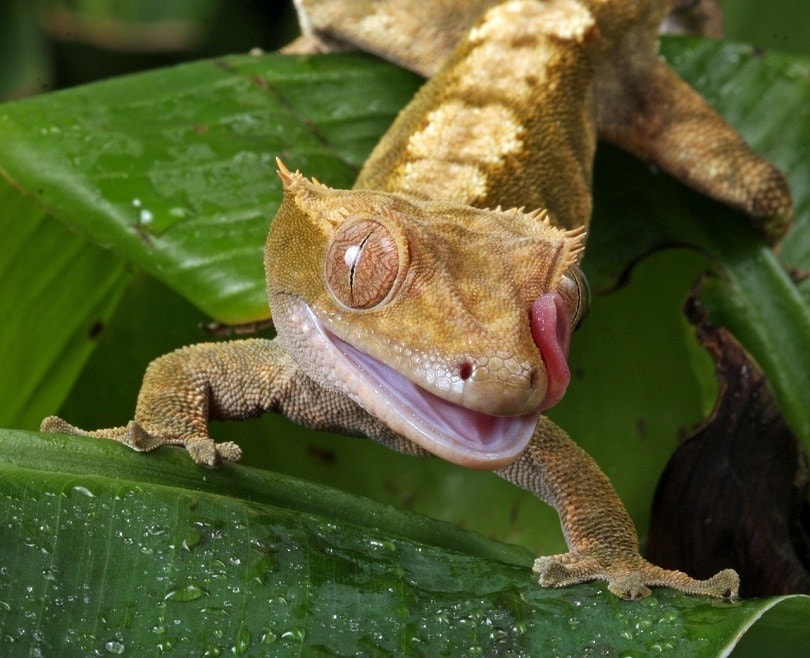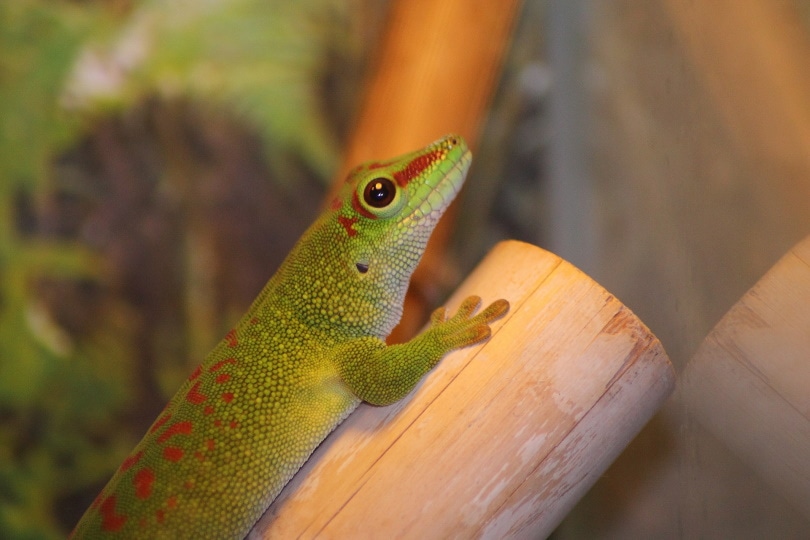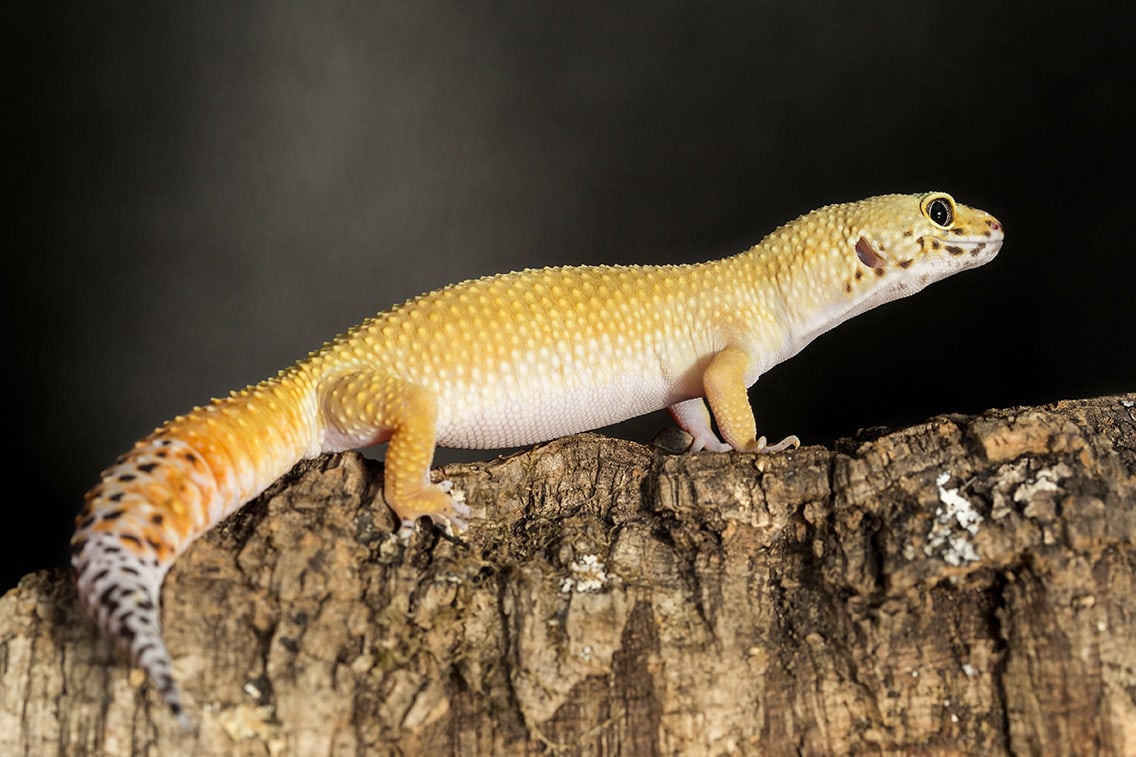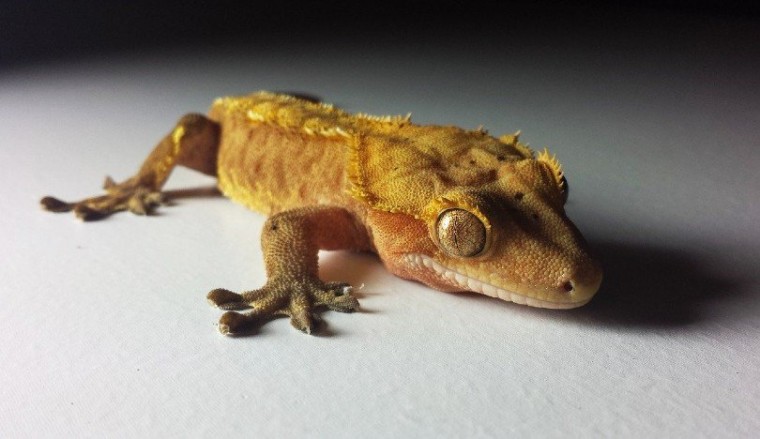
A large part of what makes Crested Geckos such popular pet reptiles is that they come in a wide variety of colors and patterns, which are known as morphs. This comes from the term “polymorphism”— a term used to describe multiple visually distinct versions of animals within the same species. These morphs can get complicated, as there is no scientific way to determine the unique morph of a Crested Gecko — two different-looking parents could create an animal that looks nothing like either of them. This is a large part of what makes owning and breeding these creatures so exciting.
With most other pet reptiles like Leopard Geckos or Bearded Dragons, their morph genetics are fairly well understood, but Crested Gecko genetics are not well documented, making the different morphs problematic to identify accurately.
That being said, there are some Crested Gecko morphs and colors that collectors and breeders collectively agree on. In this article, we’ll take a look at some of the most common morphs of these amazing animals.
The 12 Types of Crested Gecko Morphs, Colors, & Traits
1. Patternless Crested Geckos

As the name suggests, the Patternless Crested Gecko morph is devoid of any patterns, spots, or stripes. They can come in any color, shape, and size, but must have no variation in the color, not even highlights. The most common colors are olive, chocolate, dark black, red, yellow, and all shades in between.
2. Bi-color Crested Geckos

Bi-color Crested Geckos are also patternless but have a dual-tone coloring —slightly darker, but sometimes a lighter color on the top of their head and back. They may also just have a slightly different shade of their base color along their dorsal, and even very light patterning. This patterning is not enough for them to be categorized as a Dalmatian or Tiger, but not so much that they are still considered “Patternless”.
3. Tiger/Brindle

Tiger Crested Geckos are some of the most popular varieties, named for their unique “tiger stripe” patterning. Their dorsal is filled with darker bands of color that continue down the sides of their bodies and can come in almost any variation of color. Extreme patterned versions of Tigers are known as Brindles, with even more stripes of varying intensity.
4. Flame Crested Geckos
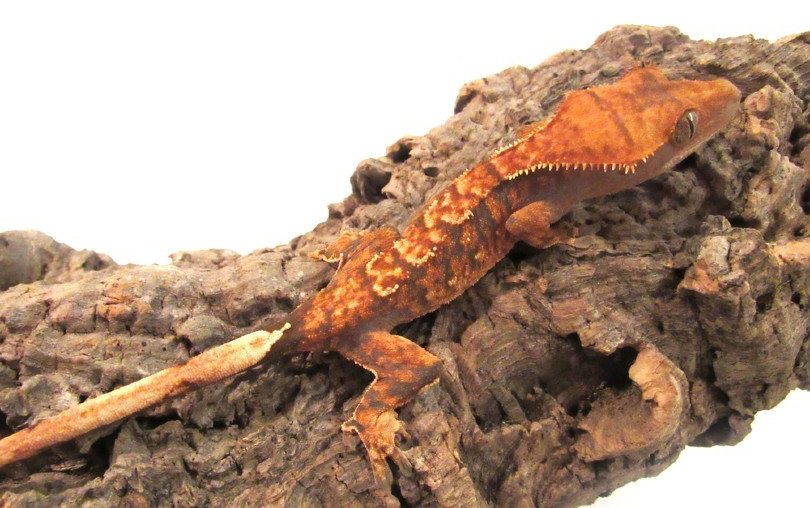
Flame Crested Geckos are fairly common but are no less beautiful than other morphs. They often have a darker base color with a cream color on their back and head. The flame part of their name comes from small stripes of creamy coloring that come up their sides, resembling a flame pattern. These Geckos can come in almost any color, and in rare cases, Flame Crested Geckos can be seen with Tiger patterning too.
5. Harlequin

The Harlequin Crested Geckos are defined as highly patterned or concentrated Flame Crested Geckos, with more prominent cream both on their backs and sides. Their base color, typically red or near-black, is contrasted with cream or yellow Harlequin patterning. Harlequins also have patterning in their limbs, a trait that is rare in Flame Geckos.
6. Extreme Harlequin

Extreme Harlequins have, as their name suggests, extreme patterning of cream or yellow throughout their bodies, typically 60% or more, and are highly sought after by collectors. The most highly sought-after versions have a near-black base coat with cream patterning, creating a striking and beautiful contrast. Some of these Geckos have such extreme patterning that it can be difficult to see their base coat color!
7. Pinstripe Crested Geckos
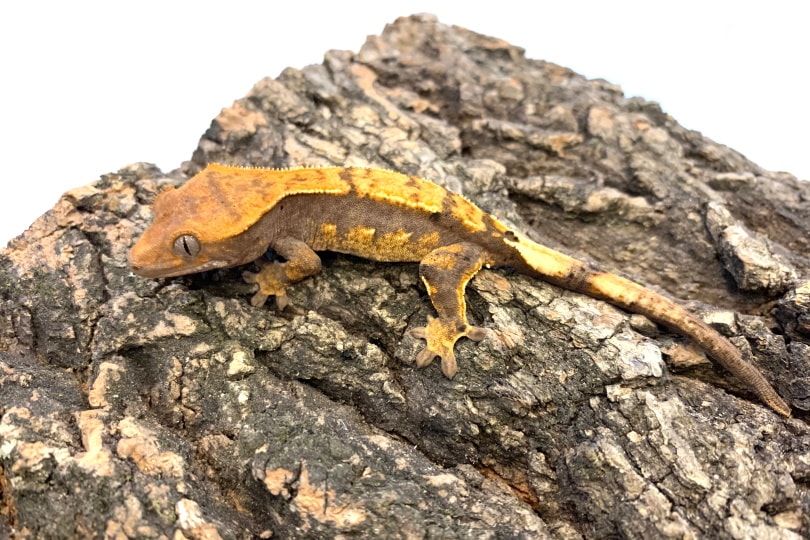
Pinstripe Crested Geckos are some of the most sought-after pattern varieties and are defined by a grouping of two or more of the above-mentioned traits. They have two sets of raised scales running down their backs, often cream in color, forming a pinstripe look. The rest of their body can have Flame or Harlequin patterning, or more rarely tiger stripes or even a solid color.
8. Phantom Pinstripe

Far less common than the classic Pinstripe Gecko, Phantom Pinstripes have a darker stripe of color running underneath and around the scales, as opposed to the raised coloring of the classic Pinstripe. They typically have a lighter base color with darker pinstriping and are not as high contrast as some other morphs.
9. Quadstripe

A Quadstripe Gecko has the classic pinstripes running down their backs, as well as their sides, making for a truly unique looking lizard. The lateral stripes often cause the scales on the side to be raised too, which is rarely seen in other Crested Gecko morphs.
10. Dalmatian Crested Geckos

Dalmatian morphs are another popular Gecko variation, defined by contrasting spots of varying intensity throughout their bodies. Some variations are sparsely spotted, with small and few spots, while others are so spotted you can barely see their base color. Dalmatians with few, smaller spots are fairly common, but variants with large dark spots are highly sought after, and thus expensive.
11. White Spotted

White Spotted Geckos began with their domestication, and breeders began noticing white spots or “portholes” on the Gecko’s chest, belly, legs, and nose. These spots are typically tiny and are a result of unfinished pigmentation during the incubation period, but more recently specimens have been seen with larger and larger white spots.
12. Lavender
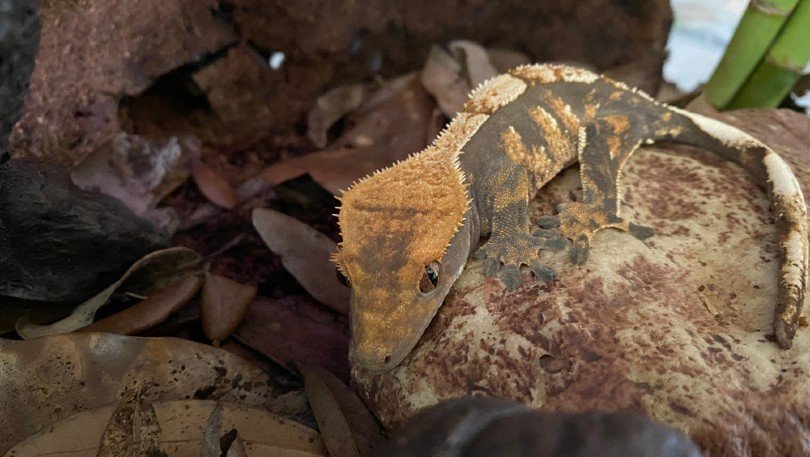
The Lavender Gecko has become popular in recent years and the variation is unique in that they do not change their base color — known as “firing up” — as most crested Geckos do. They have a pale grey base shade that resembles Lavender, which reportedly does not change even when they are fired up.
- You may also be interested in: 12 African Fat-Tailed Gecko Morphs & Colors (With Pictures)
Featured Image Credit: vujicivana, Pixabay

